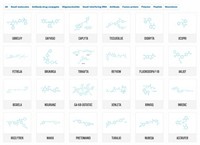Advertisement
Grab your lab coat. Let's get started
Welcome!
Welcome!
Create an account below to get 6 C&EN articles per month, receive newsletters and more - all free.
It seems this is your first time logging in online. Please enter the following information to continue.
As an ACS member you automatically get access to this site. All we need is few more details to create your reading experience.
Not you? Sign in with a different account.
Not you? Sign in with a different account.
ERROR 1
ERROR 1
ERROR 2
ERROR 2
ERROR 2
ERROR 2
ERROR 2
Password and Confirm password must match.
If you have an ACS member number, please enter it here so we can link this account to your membership. (optional)
ERROR 2
ACS values your privacy. By submitting your information, you are gaining access to C&EN and subscribing to our weekly newsletter. We use the information you provide to make your reading experience better, and we will never sell your data to third party members.
Business
Drug Spending Jumped In 2014, IMS Study Finds
Pharmaceuticals: New drugs, fewer patent expirations drove sales growth
by Michael McCoy
April 16, 2015
| A version of this story appeared in
Volume 93, Issue 16
Fueled by a spate of expensive new drugs and a dearth of patent expirations for older ones, U.S. spending on prescription drugs rose 13.1% last year to $374 billion. The increase was the highest since 2001, when spending growth was 17.0%.

That’s the conclusion of a new report from the IMS Institute for Healthcare Informatics, the research arm of the health care data firm IMS Health. IMS says it published the report as a public service, without industry or government funding.
The $43.4 billion increase in spending on medicines was led by specialty drugs—treatments that are often injectable, high-cost biologics. Last year the category also included four new small-molecule treatments for hepatitis C, which together cost patients and insurers $11.3 billion. Overall, specialty drugs accounted for one-third of medicine spending, up from 23% five years ago.
Another reason for the jump in spending was lower savings from patent expirations on expensive branded drugs, IMS says. The impact of generic switches on drug sales was $11.9 billion in 2014, the lowest amount in the past five years and down significantly from the 2012 peak of $29.3 billion.
In states that increased insurance eligibility under the Affordable Care Act, pharmacists filled 25.4% more prescriptions than in 2013. But overall, these newly insured accounted for only $1.0 billion of the 2014 increase in drug spending, according to Murray Aitken, executive director of the IMS Institute. U.S. doctor office visits and hospitalizations actually declined in 2014, IMS says.
Last year’s spending jump contrasts sharply with the 2013 increase of only 3.2%. Although Aitken isn’t making a specific prediction, he says the factors that came together in 2014 should have less impact in future years, resulting in more modest levels of spending growth.





Join the conversation
Contact the reporter
Submit a Letter to the Editor for publication
Engage with us on Twitter